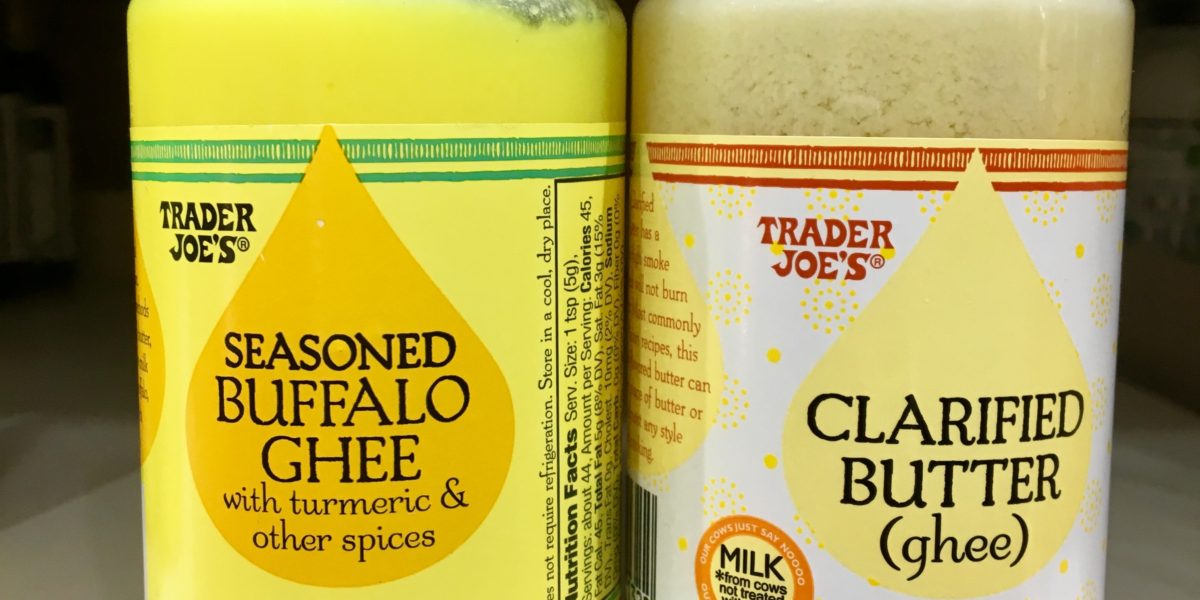
What the FLIK is... Ghee?
Recently anointed as a Superfood, jars of ghee are popping up in health food stores across the nation. The truth is that ghee isn’t anything new. In fact, for centuries, it has been used to add rich, buttery flavor to Indian and South Asian cuisine.
So what the FLIK is...ghee?
Ghee is toasted, clarified butter, which is made when butter is slowly heated. During the heating process, the milk solids separate from the liquid fats. Once the milk solids are skimmed off – voila, you have ghee. When ghee is heated, it will have a yellow, oil-like consistency, and once cooled it will have a creamier, solid consistency.
Is ghee good for me?
With popular fad diets emphasizing high fat intake -- like the paleo and the ketogenic diets – it is no surprise that ghee is having a moment in the spotlight. When considering your fat intake, it is important to understand the difference between unsaturated fats and saturated fats.
Unsaturated fats, often referred to as “healthy fats” are found in plant-based foods like avocados, nuts and seeds. These fats help lower your cholesterol, protect against heart disease and may even reduce inflammation. On the other hand, saturated fats are primarily found in animal products like butter and can raise cholesterol levels and increase your risk for plaque formation, heart disease and stroke.
The bottom line: Both butter and ghee are saturated fats, but can be enjoyed as part of a balanced diet.
What is the difference between butter and ghee?
The nutritional difference between ghee and butter is negligible. Ghee has slightly more saturated fat than butter. A tablespoon of ghee contains about 120 calories, whereas a tablespoon of butter contains a little over 100 calories. Both contain fat soluble vitamins A, D, E and K.
Ghee is a great choice for people with a milk allergy and lactose intolerance because the milk solids of butter are removed. It is also shelf stable and does not need to be refrigerated.
From a culinary standpoint, ghee can technically be used in the same way as butter, although it really shines in savory applications, such as vegetable sautés. Unlike butter, it can be heated to very high temperatures, all the way to 485 degrees.

How do I make ghee?
Prepared ghee is readily available at health food stores and many mainstream grocery stores. But, if you are a do-it-yourself type of person, here’s how to make ghee at home.
You will need:
-One pound of unsalted, high quality butter
-One heavy-bottomed sauce pan
-Cheesecloth or a large coffee filter
-One bowl, one jar and one spoon
Add butter to a saucepan over medium-low heat. The butter will start to bubble a little and a white film will form on top. The white film is simply the milk solids floating to the top. Once the butter is completely melted, turn the heat to low and skim the milk solids off the top of the oil. Keep doing this, stopping periodically to let the butter bubble, until the ghee starts to brown a little. It will smell a little nutty. Remove from heat, let ghee cool for a couple of minutes. Then pour through a cheesecloth over a bowl. Pour ghee into a clean jar and store at room temperature.
Now what?
-Drizzle melted ghee on fresh popped popcorn next time you crave a savory snack.
-Replace ghee for olive oil when you roast your favorite vegetables. Ghee-roasted cauliflower would make a divine combination. Not to mention ghee-roasted potatoes!
-Lightly coat your pan with ghee the next time you scramble eggs for a next-level breakfast
-Ghee can be used in place of oil in any muffin or quick bread recipe. Its nutty flavor tastes great in banana bread.
+++
Like this article? Check out more from our What the FLIK series…
For more information about this article or others, please email us at FLIKblog@compass-usa.com.
Written by Christianna Gozzi, MA, MS, dietetic intern